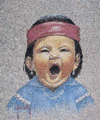La présence éventuelle d'une publicité ci-dessus est insérée par le routeur du mailing-liste indépendamment de mes choix en compensation de la gratuité de son service Dr O Walusinski baillement.com baillement.info yawning.info 

jeudi 1er janvier 2004 la lettre d'information du site baillement.com N°25 Si vous ne voyez pas les images, cliquez ici pour lire cette lettre dans votre navigateur. If you cannot see pictures below, to view the email in your web browser click here baillement.com est libre d'accès, base documentaire pour comprendre, chercher, travailler
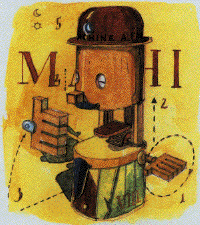
la machine à bâiller TSE- TSE la contine du bâillement le livre d'éveil qui provoque la somnolence Editions du Rouergue, Rodez
UN PEU D'HISTOIRE- «Les plus grandes théories sur le bâillement n'ont jamais vraiment permis de connaître les raisons pour lesquelles l'être humain - et certains animaux - sont épris de ce phénomène qui consiste à leur faire ouvrir la bouche dans sa plus grande dimension comme s'ils devaient gober les mouches.
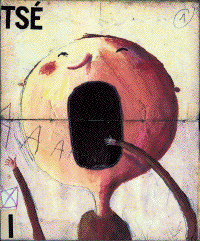
- Pourtant l'on prête au professeur ZaZouBerger l'invention de la première machine à bâiller qui aurait aux dires de ses contemporains déclenché chez son auteur le premier bâillement.
- Il aurait communiqué l'envie de bâiller à ses proches, qui eux-mêmes surpris etc. Par conséquent le bâillement a traversé les siècles jusqu'à nos jours et même nos nuits. Et c'est ainsi que grâce à cette invention nous bâillons machinalement........»
Baron Constantin von Economo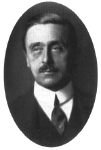
Mouvements involontaires de la face et de la tête, à allure de spasmes rythmiques, survenant chez un malade atteint d'encéphalite léthargique Crouzon et Ducas La Revue Neurologique Mai 1928, n°5 Fou rire syncopal et bâillements au cours de l'encéphalite épidémique Sicard JA et Paraff A Bulletins et mémoires de la Société médicale des hôpitaux de Paris 1921; 45; 232 Les séquelles de l'encéphalite épidémique G Guillain ,P Mollaret 1932 Manifestations tardives de l'encéphalite épidémique (observations de bâillements n° 7 , 49 , 61 ) G Lévy Travail de la clinique des maladies du système nerveux Prof Pierre Marie Vigot ed, Paris 1922 von Economo Encephalitis Morris S Dickman Arch Neurol 2001; 58; 1696-1698 M. Baron Constantin von Economo and encephalitis lethargica JM Pearce J Neurol Neurosurg Psychiatry 1996; 60; 167 
Encéphalite léthargique Cruchet, Moutier, Calmettes Soc méd hop Paris 27 avril 1917 Les séquelles neurologiques de l'encéphalite épidémique Riser et Mériel Revue Oto Neuro Ophtalmologie 1931; n°4; 297-322 et n°5 p323-348 Encéphalite léthargique E. May Nouveau Traité de Médecine T4; Masson 1925 L'encéphalite épidémique ses origines, les 64 premières observations connues R. Cruchet Doin Ed Paris 1928 Des altérations psychiques dans la névraxite épidémique et la maladie de Parkinson post-encéphalitique Thèse 28 mars 1923 D. Nestorovith Montpellier Encephalitis lethargica von Economo C Wien Kin Wschr 1917; 30; 581-5 Encephalitis lethargica. Its sequelae and treatment von Economo C 1931 Translated by KO Newman London: Oxford University Press Influenza RNA not detected in archival brain tissues from acute encephalitis lethargica cases or in postencephalitic Parkinson cases McCall S, Henry JM, Reid AH, Taubenberger JK J Neuropathol Exp Neurol. 2001; 60; 11; 1121-2 Lack of detection of influenza genes in archived formalin-fixed, paraffin wax-embedded brain samples of encephalitis lethargica patients from 1916 to 1920 Lo KC, Geddes JF, Daniels RS Virchows Arch 2003; 442; 6; 591-6 Neuropsychiatric interpretations of postencephalitic movement disorders Ward CD Mov Disord 2003; 18; 6; 623-30 Cortical arousal induced by microinjection of orexins into the paraventricular nucleus of the rat Ikuko Sato-Suzuki Behavioural Brain Research 2002; 28; 169-177
Encephalitis Lethargica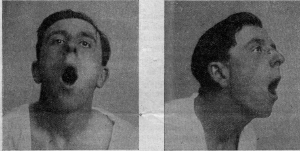
- LF. Haas: «In April 1917, Dr Constantin von Economo (1876-1931) presented his clinical and pathologic findings of a new disease, soon to be part of a worldwide epidemic, before the Vienna Psychiatric Society. He named it encephalitis lethargica. After years of careful observation, he collected and analyzed thousands of cases and classified them into 3 clinical syndromes: somnolent-ophthalmoplegic, hyperkinetic, and amyostatic-akinetic forms. He described the now legendary postencephalitic Parkinsonism, noting that symptoms could emerge years after the original infection, often without signs of prodromal "flu." He emphasized the neuropathologic findings: inflammatory changes in the tegmentum of the midbrain accounting for the sleep disturbance and ocular signs. After encountering sporadic cases following the epidemic, he concluded that the somnolent-ophthalmoplegic syndrome was the primary expression of encephalitis lethargica. These articles outlines the observations and conclusions of Dr von Economo during and after the epidemic through seminal quotations primarily from his published works, as well as from more recent reports.The disease first appeared in Romania in 1915 and raged globally until 1927.»
- It's seem possible that the loss of hypocretin's neurons and/or melatonin's neurons explain this symptomatology (Inversion of the circadian melatonin rhythm in Smith-Magenis syndrome De Leersnyder H et al.Rev Neurol 2003; 159; 11 Suppl; 21-6). An Encephalitis-lethargica-like syndrome is still prevalent and this syndrome may be secondary to autoimmunity against deep grey matter neurons.
Encéphalite léthargique - Entre 1917 et 1925, toute l'Europe est atteinte par l'épidémie de cette encéphalite léthargique qu'identifia alors C.von Economo (1876-1931). Elle était liée à des destructions neuronales apparaissant aujourd'hui d'origine autoimmune, le virus de la grippe n'étant plus considéré actuellement comme facteur inducteur. Les lésions sous-corticales et mésodiencéphaliques déterminaient des troubles aigus, souvent mortels, mais aussi, chez ceux qui en réchappaient, toute une série de perturbations chroniques, telles que des altérations graves de l'humeur, des manifestations dépressives ou délirantes, des mouvements anormaux (comme dans les observations rapportées ici : bâillements) à type de crises occulogyres, de parkinsonisme etc... L'unité du processus morbide et la relative constance du siège des lésions contrastaient avec le polymorphisme des manifestations cliniques, de telle sorte que certains en venaient alors à mettre en doute la réalité effective. Les découvertes contemporaines confirment le bien-fondé des hypothèses formulées par von Economo. L'atteinte auto-immune (cf article de 2003 ci-dessous) des ganglions de la base et de l'hypothalamus entrainait, probablement, entre autres, la raréfaction des neurones à hypocrétine, et donc tarissait, de façon transitoire ou mortelle, la sécrétion d'un des neuromédiateurs responsables de l'éveil. D'autres structures pouvaient aussi être lésées, inhibant les sécrétions de mélatonine et expliquant ainsi les inversions de rythme nycthéméral, mimant le syndrome génétique de Smith-Magenis. (Inversion of the circadian melatonin rhythm in Smith-Magenis syndrome De Leersnyder H et al.Rev Neurol 2003; 159; 11 Suppl; 21-6)
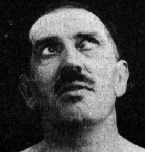
- En 2004
Encephalitis lethargica: part of a spectrum of post-streptococcal autoimmune diseases? A Vincent (editorial) Brain 2004; 127; 1; 2 - 3 Encephalitis lethargica syndrome: 20 new cases and evidence of basal ganglia autoimmunity RC Dale, AJ Church, RA Surtees, AJ Lees, JE Adcock, B Harding, BG Neville, G Giovannoni Brain 2004; 127; 1; 21-33 - Since the 1916-1927 epidemic, only sporadic cases have been described. Pathological studies revealed an encephalitis of the midbrain and basal ganglia, with lymphocyte (predominantly plasma cell) infiltration. Recent examination of archived EL brain material has failed to demonstrate influenza RNA, adding to the evidence that EL was not an invasive influenza encephalitis. By contrast, the findings of intrathecal oligoclonal bands (OCB) and beneficial effects of steroid treatments have provoked the hypothesis that EL may be immune-mediated. We have recently seen 20 patients with a similar EL phenotype, 55% of whom had a preceding pharyngitis. The patients had remarkable similarity to the historical descriptions of EL: sleep disorder (somnolence, sleep inversion or insomnia), lethargy, parkinsonism, dyskinesias and neuropsychiatric symptoms. CSF examination commonly showed elevated protein and OCB (75 and 69% respectively). Investigation found no evidence of viral encephalitis or other recognized causes of rapid-onset parkinsonism. We investigated the possibility that this phenotype could be a postinfectious autoimmune CNS disorder, and therefore similar to Sydenham's chorea. Anti-streptolysin-O titres were elevated in 65% of patients. Furthermore, western immunoblotting showed that 95% of EL patients had autoantibodies reactive against human basal ganglia antigens.....It is perhaps regrettable that no measurement of Hypocretin (CRF) or Melatonin stay in this study.
- Case example 2
- A 15-year-old boy presented with an acute personality change 10 days after an upper respiratory tract infection. He became extremely anxious and worried about his safety. One week later he had an oculogyric crisis and developed upper-limb resting tremor and bradykinesia. This was followed by extreme daytime somnolence, lethargy and intractable hiccough. On examination, he would fall asleep if not stimulated and yawned continuously. Pupillary responses were poorly reactive to light and accommodation....continuation.
- Encephalitis lethargica: lessons for contemporary neuropsychiatry SR Cheyette and JL Cummings J Neuropsychiatry Clin Neurosci 1995; 7; 125-134
- Encephalitis lethargica (von Economo's encephalitis), pandemic from 1917 to 1926, opened a window on the study of behavioral consequences of infection-induced subcortical disorder. Widely varying acute manifestations included extrapyramidal disorders, myoclonus, eye movement disorders, paralyses, delirium, mood changes, inverted diurnal rhythms, and catatonia. Major pathological changes involved the substantia nigra, globus pallidus, and hypothalamus. A symptom-free recovery period was often followed by postencephalitic disturbances, typically parkinsonism in adults and conduct disorder in children. Occurrence of depression, mania, obsessive-compulsive disorder, and hyperactivity in post-encephalitic patients anticipated current concepts of the role of the basal ganglia in mood, personality, and obsessional syndromes. Observations of deferred onset and "tardy" hyperkinesias presaged current theories of the pathophysiology of tardive dyskinesia.
- Encephalitis lethargica. A report of four recent cases RS Howard and AJ Lees Brain 1987; 110; 1; 19-33
- Four patients are described with an encephalitic illness identical to that described by von Economo. Electroencephalographic, evoked potential and autopsy data suggest that involvement of the cerebral cortex is more extensive than has been generally recognized. Serological tests and viral cultures failed to reveal the infectious agent but the presence of oligoclonal IgG banding in the cerebrospinal fluid in 3 of the patients during the acute phase of the illness would be in keeping with a viral aetiology.
Cinquante ans de sommeil Oliver Sacks Edition française 1987 le Seuil Cas n°4 Robert O - «il jouit d'une santé excellente jusqu'à dix-sept ans, âge auquel il contracta une encéphalite léthargique de type soporeux compliquée d'une grippe, qui le plongea dans un état de somnolence (non stuporeuse) durant six mois. Sitôt après s'être rétabli de cet accès initial, il constata qu'il souffrait de troubles du sommeil et de l'humeur, et de certains désordres psychiques.
- Entre 1922 et 1930, son problème majeur fut sans doute l'inversion de son rythme de sommeil : il avait tendance à avoir extrêmement sommeil et à tomber dans une sorte de torpeur le jour, et à être, la nuit, très énervé et insomniaque. Il fut également sujet à de soudains accès de bâillements, à de la narcolepsie, à des accès de somnambulisme et de somniloquisme, à des paralysies se déclarant pendant le sommeil et à des cauchemars.»
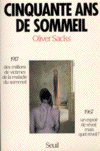
Si cette épidémie récidivait actuellement, comment s'adapteraient les services d'urgence ?
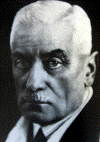
Professeur Georges Guillain - Les séquelles de l'encéphalite épidémique
G Guillain, P Mollaret 1932
-
« Le respect de la tradition, l'amour du passé, l'amour des vieilles pierres, des vieux livres, ce n'est pas le désir de la stabilité stérile, c'est le désir du progrès en prenant pour exemples les illustres prédécesseurs qui rayonnent encore de l'énergie créatrice pour les générations nouvelles » Georges Guillain (1876-1961). Celui-ci reste un des neurologues les plus célèbres du XX° siècle. Ses travaux sur la pathologie démyélinisante ne doivent pas être éclipsés par la description princeps de la polyradiculonévrite qui porte son nom associé à JA. Barré. Successeur de son maître, Pierre Marie, élève de JM. Charcot, il sut maintenir le prestige et la renommée mondiale de la chaire des maladies du sytème nerveux de La Salpêrière qu'il dirigea de 1925 à 1948. Fait peu banal, à la fin de ses études, il parcourut divers services de neurologie aux USA, en 1902, à 26 ans, alors qu'à l'époque l'Europe et Paris attiraient les neurologues du monde entier. - Georges Guillain
(1876-1961) stand as one of the most celebrated French
neurologists of the twentieth century, specifically in
the field of inflammatory demyelinating
polyradiculoneuropathy, although he made significant
contributions to research in multiple sclerosis and a
number of other clinical areas of neurology. He studied
directly under Charcot's favored student, Pierre
Marie, and succeeded his maître in holding the
Professional Chair of Disease of the Nervous System at
the
Salpêtrière from 1925 to 1948.
During Guillain's years of medical training in the late 1890s, France was still the Mecca of neurologie study worldwide. Many European and US physicians traveled to Paris to broaden their expertise and establish their credentials as neurologie experts. As such, Franco-American neurologie interactions at the turn of the century were a one-way street, with Americans voyaging regularly to Paris and bringing back European ideas to the United States.
The young George Guillain, however, represents a vivid exception to this pattern. In 1902, at age 26, he embarked on a 3-month journey through the States, with a particular interest in exploring American neurologie facilities.
Locked-in syndromeCase report M Krasnianski, C Gaul, S Neudecker, C Behrmann, A Schlüter, M Winterholler Clinical Neurology and Neurosurgery 2003; 106; 1; 44-46 Yawning in a case with transsecting glioma of the pons Gschwend J Fortschr. Neurol. Psychiat 1977; 45; 652-655 Involuntary motor phenomena in the locked-in syndrome Bauer G et al J. Neurol 1980; 223; 191-198 Stimulus evoked oral automatismsin the locked-in syndrome Bauer G et al Arch Neurol 1982; 39; 435-436
Yawning despite trismus in a patient with locked-in syndrome caused by a thrombosed megadolichobasilar artery- Michael Krasnianski, at al. report a 62-year-old woman with a locked-in syndrome with bilateral masticatory spasms and persistent trismus, who was still able to yawn. A vascular malformation of the basilar artery mega-dolicho basilar artery (fusiform anevrysm, vertebrobasilar dolichoectasia) was determined to be the underlying cause of this rare combination of symptoms. A thrombus in the megadolichobasilaris as well as an almost total pontine infarction were demonstrated on CT- and MRI-scans. Thus, trismus may be associated with locked-in syndrome due to megadolichobasilar artery thrombus, although yawning is still possible.
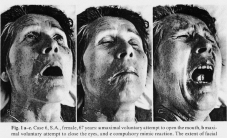
Persistance de bâillements malgré un trismus chez un patient atteint d'un locked-in syndrome secondaire à une thrombose d'un mégadolicho tronc basilaire - Michael Krasnianski, at al. rapporte le cas d'un femme de 62 ans victime d'un locked-in syndrome présentant un spasme bilatéral des muscles masticateurs, reponsable de trismus lui permettant néanmoins de bâiller. Elle souffrait d'une malformation à type de mégadolicho tronc basilaire (anévrysme fusiforme, dolichoectasie vertèbrale) qui a été considérée comme responsable de cette rare combinaison de signes cliniques. Une thrombose de ce tronc basilaire malformé aboutit à un infarctus total du Pont, visible sur le scanner et l'IRM. Ainsi, le trismus peut-être un signe apparaissant au cours du locked-in syndrome et magré lui le bâillement reste possible.
Instituto de Fisiolog§aBenemerita Universidad Autonoma de Puebla Mexico Une fructueuse rencontre avec JR. Eguibar et J. Valencia me permet de présenter un vaste panorama des travaux débuter à Cuba puis poursuivis à Mexico par les équipes de R. Holmgren et R. Urba-Holmgren auquelles ont succédé JR. Eguibar, J. Valencia et A. Moyaho Qu'ils soient ici remerciés 1990 Cooper SJ, Dourish CT Neural basis of drug induced yawning in neurobiology of stereotyped behaviour Oxford ed
-
1977 -Urba-Holmgren R, Gonzalez RM, Holmgren B Is yawning a cholinergic response? Nature 1977; 267; 5608; 261-2 et commentaires Cholinergic link in yawning A Cowan Nature 1978; 271; 187-188 - 1979 -Holmgren R; Holmgren B; Rodriguez R; Gonzalez RM. Serotonergic modulation of yawning Pharmacol Biochem Behav 1979; 11; 3; 371-2
- 1980 -Holmgren R; Holmgren B; Rodriguez R Sex hormone influences on yawning behavior Acta Neurobiol Exp 1980; 40; 515-519
- 1980 -Holmgren B and Urba-Holmgren R Interaction of cholinergic and dopaminergic inflences en yawning behavior Acta Neurobiol Exp 1980; 40; 633-642
- 1985 -Holmgren B; Urba-Holmgren R; Trucios N; Zermeno M; Eguibar JR. Association of spontaneous and dopaminergic-induced yawning and penile erections in the rat.Pharmacol Biochem Behav 1985; 22; 1; 31-5 et pdf de cet article
- 1984 -Anias J; Homgren B; Urba Holmogren end Eguibar JR Circadian variation of yawning behavior Acta Neurobiol Exp 1984; 44: 179-186 et pdf de cet article
- 1987 -Argiolas A; Gessa GL Oxytocin : a powerful stimulant of penile erection and yawning in mal rats Hypothalamic dysfunction Raven Press 156-163; 1987
- 1989 -Doger E; Urba-Holmgren R; Eguibar JR; Holmgren B GABAergic modulation of yawning behavior.Pharmacol Biochem Behav 1989; 34; 2; 237-40 et pdf de cet article
- 1990 -Urba-Holmgren R, Trucios N, Holmgren B, Eguibar JR, Gavito A, Cruz G, Santos A Genotypic dependency of spontaneous yawning frequency in the rat Behav Brain Res 1990; 40; 1; 29-35 et pdf de cet article
- 1991 -Holmgren B; Budelli R; Urba-Holmgren JR; Eguibar M; Holmgren G; Baz-Tellez & J. Anias Food Anticipatory Yawning Rhythm in the Rat. Acta Neurobiologiae Experimentalis 1991; 51; 97-105 et pdf de cet article
- 1992 -Urba-Holmgren R, Holmgren B, Leon BA, Ugarte A Age-dependent changes in serotonergic modulation of yawning in the rat. Pharmacol Biochem Behav 1992; 43; 2; 483-6
- 1993 -Urba-Holmgren R, Santos A, Holmgren B, Eguibar JR Two inbred rat sublines that differ in spontaneous yawning behavior also differ in their responses to cholinergic and dopaminergic drugs Behav Brain Res 1993; 56; 2; 155-9 et pdf de cet article
- 1995 -Moyaho A et al Induced grooming transitions and open field behaviour differ in high- and low-yawning sublines of Sprague-Dawley rats Animal Behavior 1995; 50; 61-72 et pdf de cet article
- 1997 -Eguibar JR, Moyaho A Inhibition of grooming by pilocarpine differs in high- and low-yawning sublines of SpragueÐDawley Rats Pharmacology Biochemistry and Behavior,1997; 58; 2; 317-322 et pdf de cet article
- 2002 -Moyaho A, Valencia J Grooming and yawning trace adjustment to unfamiliar environments in laboratory Sprague-Dawley rats J Comparative Psychology 2002; 116; 3; 263-269
- 2002 -José Ramón Eguibar, Alejandro Moyaho y José C. Romero Carbente Influencias Medio Ambientales y Farmacológicas Sobre el Bostezo y el Aseo en Dos Sublineas de Ratas con Una Frecuencia de Bostezo Espontáneo Diferente Neuroetologia - La Década del Cerebro y la Conducta Animal Editado por Jorge Manzo Denes Universidad Veracruzana (pdf)
- 2002 -Diaz-Romero M, Eguibar JR, Moyaho A Bombesin decreases yawning in a high-yawning subline of SpragueÐDawley rats Pharmacology Biochemistry and Behavior 2002; 71; 2002; 103-109 et pdf de cet article
- 2003 -Eguibar JR et al Behavioral differences between selectively bred rats: D1 versus D2 receptors in yawning and grooming Pharmacology Biochemistry and Behavior 2003; 74; 827-832 et pdf de cet article
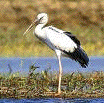
Anastomus oscitans Le bâillement se dit : « das Gähnen », en allemend « the yawn » en anglais « lo sbadiglio » en italien « el bostezo » en espagnol En latin : De oscitatione : Daniel Sennert (1572-1637) explique ainsi la production du bâillement : «Oscitatio quidem fit, musculis masticationi dicatis et inferiorem maxillam moventibus, affectis, cum halitus vaporosi in iis collecti sunt, qui hoc motu discutiuntur.»
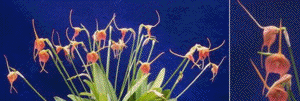
Masdevallia oscitans - Étymologiquement, le verbe bâiller vient du vieux français baailler dont l'origine latine bataculare (formé sur batare ou badare) signifie être béant, ouvert . C'est pour cela qu'une robe, un corsage ou une porte bâille, bien que ne sachant ni respirer ni dormir. Une étoffe ou un dentelle bâille quand elle n'est pas assez tendue. Le menuisier dit à son apprenti : « les ais (haies) de cette cloison bâillent ! » d'après A.Hatzfeld et A.Darmesteter Dictionnaire de la langue française et traité de la formation de la langue (1888)
- Le langage populaire connaît les locutions : bâiller comme une carpe, comme une huître, bâiller foin en corne, bâiller à s'en décrocher la mâchoire.
- Dans sa thèse de 1901, R.Trautmann dit que bâillement dérive de balare (bêler) probablement à cause du bruit accompagnant l'action organique qu'il désigne. Moins usitée de nos jours, il utilise, lui, l'adjectif oscitant (e), emprunté du latin oscitans qui bâille. Une fièvre oscitante est une fièvre accompagnée de bâillements répétés. Cet adjectif caractérise d'autres êtres vivants; ainsi la classification taxonomique nomme la cigogne : Anastomus oscitans; Stellifer oscitans est un poisson, le magister bâillant; Masdevallia oscitans est une orchidée.
- Pandiculation dérive du latin pandiculari et signifie s'étendre, mouvement par lequel on renverse la tête en arrière en s'étirant les membres, illustré par le tableau autoportrait de Ducreux en 1783 (fondation Getty). R. Trautamn cite dans la bibliographie de sa thèse des auteurs écrivant en latin : "Kruger 1627 De oscitat." ou "Walther 1775 De oscitatione" ou Hermann 1720 De oscit. et pandicul."
- Diderot dans L'Encylopédie écrit en 1751: « BÂILLEMENT, s.m. Ce mot est aussi un terme de Grammaire; on dit également hiatus, mais ce dernier est latin. Il y a bâillement toutes les fois qu'un mot terminé par une voyelle, est suivi d'un autre qui commence par une voyelle, comme dans "il m'obligea à y aller"; alors la bouche demeure ouverte entre les deux voyelles, par la nécessité de donner passage à l'air qui forme l'une puis l'autre sans aucune consonne intermédiaire...»
- From Price Heusner :
- It is of interest to compare all of the foregoing descriptions with the dictionary definitions of the word yawning and its alleged synonyms, pandiculation, oscitation and chasma. Standard lay and medical dictionaries agree that the word yawning is derived from the Old English verb ganien which has always denoted an "opening" in the sense of "to gape."
- The definitions of yawning given by the lay dictionaries are in such complete harmony that only one need be quoted: An involuntary act excited by drowsiness, etc., and consisting of a deep and long inspiration usually following several successive attempts at inspiration, the mouth, fauces, etc., typically being wide open. Some medical dictionaries conform to this restricted definition, but others have expanded the meaning to include the associated stretching of the limbs.
- Thus Dorland offers the following definition of yawning: Pandiculation; a deep, involuntary inspiration with the open mouth, often accompanied by the act of stretching. From this it also appears that Dorland regards pandiculation and yawnning as synonyms. Both lay and medical dictionaries agree that pandiculation is derived from the Latin verb pandiculari, meaning "to stretch oneself."
- Of these dictionaries only Dorland, as already noted, offers this word as a synonym for yawning. The others are in agreement on a more narrow definition of which the following is characteristic: A stretching and stiffening, esp. of the trunk and extremities, as when fatigued and or after waking from sleep.
- All of these dictionaries offer the words chasma (from the Latin noun chasma .... a cleft or an abyss) and oscitation (from the Latin verb oscitare .... to open the mouth wide) as synonyms for the noun yawn.
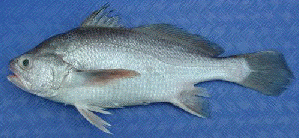
Stellifer oscitans
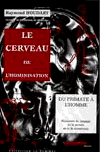
Le cerveau de l'hominisation, du primate à l'Homme Prof R Houdart ed Maïade, La Nouaille, 19160 Lamazière-basse
-
Autres documents mis en ligne ce mois-ci :
- Bombesin decreases yawning in a high-yawning subline of SpragueÐDawley rats Diaz-Romero M, Eguibar JR, Moyaho A
- Albert Londe la photographie médicale à La Salpêtrière
- Désiré Bourneville J Gateaux-Mennecier
- Gravure de H Daumier les musiciens
- The molecular logic of endocannabinoïd signalling D Piomelli
- The apomorphine test: a biological marker for heroin dependence disorder? J Guardia
- Reversal of dopamine D2 receptor responses by an anandamide transport inhibitor M Beltramo
- Potentiation of penile erection and yawning responses to apomorphine by cannabinoid receptor antagonist in rats GE da Silva
- Traité clinique et thérapeutique de l'hystérie d'après l'enseignement de La Salpêtrière Gilles de la Tourette 1895
- Nécrologie de Gilles de la Tourette dans la Nouvelle Iconographie de la Salpêtrière 1904
- Manifestations tardives de l'encéphalite épidémique G Lévy
- Le bâillement en différentes situations cliniques: un nouveau chapitre du site
- Yawning despite trismus in a patient with locked-in syndrome caused by a thrombosed megadolichobasilar artery Krasnianski M et al
- Encephalitis lethargica syndrome: 20 new cases and evidence of basal ganglia autoimmunity RC Dale et al
Résultats du sondageau 31 décembre 2003
-
Nombre de questionnaires remplis : 1070 - Combien de fois bâillez-vous par jour ? <5 = 25,5%.. 5-10 = 25,2%.. 10-15 = 15.5%.. 15-20 = 8.7%.. >20 = 25%
- Ressentez-vous des baillements excessifs ?
- 75,0% = non, tant mieux
- 25,6% = oui et je ne sais pas pouquoi
- 6,2% = oui et je prends des antidépresseurs
- 1,3% = oui et je prends des anti-épileptiques
- 4,7% = oui et je prends d'autres médicaments
- 2,3% = oui et j 'ai des troubles neurologiques
- 2,1% = oui et j 'ai des troubles hormonaux
- 2,8% = oui et j 'ai des tics moteurs
- 1,9% = oui et j 'ai des tocs
- déclenchez-vous facilement le bâillement d'autrui ? 75,3%
- êtes-vous sensible au bâillement d'autrui ? 73,5%
- «Il est temps de faire tomber cette dualité néfaste, cette antithèse inexplicable de la doctrine et de la pratique: de la doctrine rajeunie, scientifique, positive, de la pratqiue livrée trop souvent encore aux errements et aux empirismes d'antan.»
- Félix Lejars (28160 Unverre 30 janvier 1863 - Paris 8 août 1932)
- Traité de chirurgie d'urgence
- Masson Ed Paris 1906 (5° édition)
baillement.com baillement.info yawning.info écrits et réalisés par le Dr Walusinski
Voici le nombre d'abonnés à cette lettre : courriel à adresser lire les lettres précédentes d'information du site

